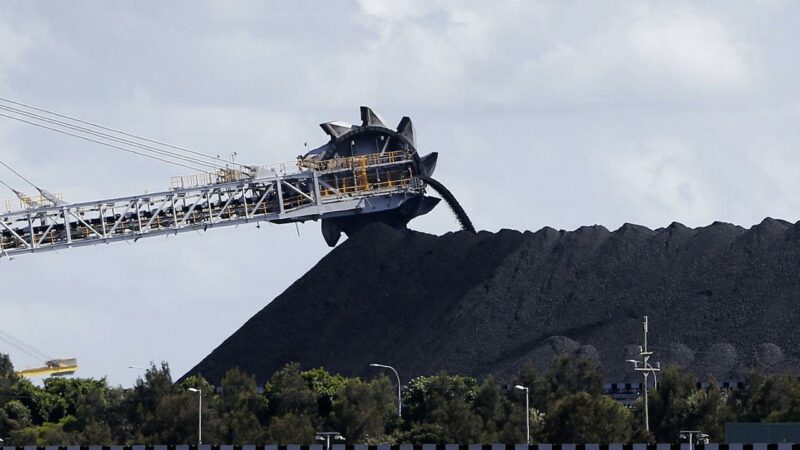As Anthony Albanese unfurled his Future Made in Australia Act, Joko Widodo was hosting Chinese Foreign Minister Wang Yi. Duncan Graham investigates the crash in Nickel and the challenge from Indonesia.
Does anyone in Canberra watch what’s happening in Indonesia? This month last year government seers were offering a five-year outlook, bragging that “revenue from Australia’s exports of critical minerals like lithium and nickel will nearly equal the current second-biggest export earner coal by 2028.”
Lulled by sirens, critical faculties muted, and concerns soothed, the Lucky Country relaxed. The comfort terms were E-power future, clean and green. Now the word is red. For ink on the BHP balance sheet.
Workers and investors got the brutal news in February: BHP’s Nickel West, a giant grouping of open-cut and underground diggings plus concentrators, smelters and refineries around Kalgoorlie, couldn’t compete. It’s writing down assets of $5.4 billion and is likely to scrap more than 2,000 jobs.
BHP’s nickel future is in limbo amid the rising cost of metallurgical coal which is used to produce the stuff.
Padlocks snapped shut on the goldfield gates in WA and mines across the country as our friendly neighbour flooded the market to destroy competition, cutting prices by 40 per cent.
The speed of change has caught Australians with mouths as agape as the closed pits. Yet all was foreseeable. During his second term (which started in 2019) President Joko ‘Jokowi’ Widodo seized the market by the throat – then squeezed.
Meanwhile, Indonesia and China draw closer together. Indonesian President Joko Widodo, known as Jokowi, hosted Chinese Foreign Minister Wang Yi at the Presidential Palace in Jakarta this week.
The meeting followed a trip by Indonesia’s Defence Minister and President-elect Prabowo Subianto to Beijing at which Chinese President Xi Jinping talked up the strong ties between Indonesia and China and outlined their shared vision for peace in the region.
Alerts get the cold shoulder
Then, there is their shared vision for trade. What does it mean for Anthony Albanese’s aspirations to value add in Australia, manufacture critical minerals like nickel, a plan soon to be enshrined in law via the Future Made in Australia Act?
For decades there’d been warnings that the world’s leading nickel producer was selling itself short, relying on returns from digging and exporting when the real money came with processing. The same message has been long told to miners in Australia and long ignored.
But the Javanese leader did listen, and he soon found Beijing business bankers and foreign friends holding similar ideas. Since then, more than $21 billion has been spent on the industry in the ore-rich provinces of Central Sulawesi and North Maluku.
By mid-last year 43 smelters were running, 28 were being built and 24 planned. Altogether more than 70,000 workers. Coal-fired power plants are used to get the temperature to the1,450-degree ore melting point negating the claim that the E-industry is in the renewables club.
Richard Marles’ Indonesia trip – trust us, we’re from the Land Down Under and mean you no harm
As part of the deal, Jokowi also banned exports of unprocessed ore. The European Union had relied on Indonesian supplies, so it protested to the World Trade Organisation, an authority of splendid ineffectiveness.
The complaint was upheld, and Indonesia appealed but kept doing what it wanted. Australian miners floated the notion that their product deserved a premium price because it was clean and the others dirty; the idea rapidly foundered on the dollar rock.
The smelters smoked and polluted; rivers turned red with runoff. But the fiery streams of pure metal started cooling into ingots forklifted onto pallets to fill factories and warehouses.
What’s on the payslip?
Prices crashed. Australia is the world’s fifth largest nickel producer and employer of more than 3,000. To see why the glut gutted the industry click on this link. No degree in economics is required, not even a calculator. Just the basic ability to reason.
It’s an official list of this year’s minimal pay across Indonesia’s 38 provinces. Readily available it shows wage rates at least 17 times lower than those in Australia.
Indonesian workers get paid by the month. The rate in East Java, an industrialised zone around the north-coast port and capital Surabaya is Rp 2,165,244. The exchange rate currently makes this sum a whisker over $207.
The Australian National Minimum Wage is $3,531 a month – that’s 17 times more than Indonesia pays. It will be reviewed on 1 July and will only stay put or go up.
These are basics, so wages are higher in both countries where skills are needed. But whatever the job, Australia stays far ahead. Statisticians quote Indonesian HR managers averaging Rp 19 million ($1,817) a month, which is less than a single Australian’s pension.
Software engineers get Rp 12 million ($1,147) while their colleagues Down Under pick up seven times that sum; the gap between salaries is too great to be flicked aside as a statistical blip.
Apologists for the discrepancy finger-wag that living costs in Australia are so high incomes must match. The COL in Jakarta is also in the clouds if they could be seen. Coughing in the smog and traffic choked metropolis is a misery, making Melbourne rush-hour congestion feel like Shangri-La.
Doing it our way
Wages aren’t alone in putting Australia out of business and Indonesia in. The industry next door runs with minimal government interference. Laws on superannuation, licensing, insurance and environmental controls add greatly to costs in Australia. Likewise, health and safety.
In December an industrial accident at a Sulawesi smelter killed 21 workers. The plant keeps operating. There may be an inquiry at some time. Maybe.
Can we compete? Last year, the government launched a $15 billion National Reconstruction Fund to “provide finance in the form of debt, equity and guarantees to support Australian projects that drive high-value industry.”
It’s not supposed to be toss-away money. The NRF’s mandate is to “target a rate of return of between two and three per cent above the five-year Australian Government bond rate over the medium to long term.”
This month Albanese spruiked upcoming laws to help factories produce clean goods like E-car batteries; it follows a similar policy in the US with its Inflation Reduction Act. Made in Australia is a comforting slogan for the nostalgics.
For 70 years, we built our own combustion-engined cars (ironically exporting Holdens to Indonesia), but that industry crashed in 2017 when General Motors Holden, Ford and Toyota collided head-on with cheaper imports.
Now many popular models are assembled in Thailand where labour costs are also lower (though slightly higher than in Indonesia) and the vehicles shipped complete.
Jokowi has had similar ideas to Albanese – or maybe the other way around. His boost for the Indonesian economy was called the 2025–45 National Long-Term Development Plan. This includes downstream processing.
Before we were king-hit by the nickel surfeit Jokowi was talking about cooperation and selling us E-cars – nickel is a major battery component. There’s a free-trade policy in place, meaning exports could be tariff-free.
Sleepers awake!
When Australian mines started to close lobbyists dashed into action with the Association of Mining and Exploration Companies hustling Canberra for a ten per cent production tax credit.
WA Premier Roger Cook (his state is the biggest producer), is reported to be considering royalty relief. The national government is set to put nickel on a “critical minerals” list.
This means companies will have “access to financing under Australia’s $4 billion Critical Minerals Facility, which offers low-interest loans and related grant programmes.”
Last year BHP’s “attributed profit” from all operations was almost $20 billion, a 58% drop against 2022. The share price dipped to $42 when the mine closures were announced but is now back to above $45.
If all goes well for investors the Australian public will end up breaking the corporate code of ‘markets rule’ by keeping unprofitable business functioning and jobs going. That’s the cost of being ‘Made in Australia’.
The moral of this tale? Boards and lenders should treat government predictions as scribble pads and do their own deep-down, on-ground research.
Duncan Graham has a Walkley Award, two Human Rights Commission awards and other prizes for his radio, TV and print journalism in Australia. He now lives in Indonesia.

